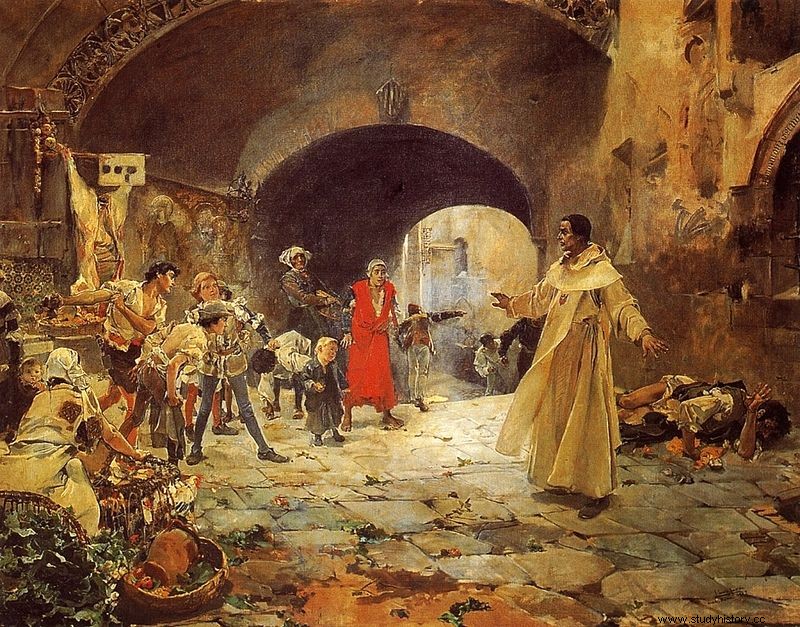Well, that, while we barbarians, chumps and bloody Spaniards were inaugurating the first psychiatric center in the world with a therapeutic organization, the gentlemen Englishmen spent their leisure time visiting the spectacle offered by the poor mentally ill. Black Legend stuff.
Formerly, madness was identified with supernatural evils, typical of demonic possessions or as divine punishments for sins committed. Later it began to be identified as the loss of reason whose only remedy was confinement and the savage experiments, more typical of torture, to which the sick were subjected. In the 14th century, what had been an Order of the Star of Bethlehem convent in London became Bethlem Royal Hospital, also called Bedlam, and was the first to take in mentally ill patients. Unfortunately, the hospital did not become famous for being a pioneer in treating mental illness, but for the brutal mistreatment of patients (those considered violent or dangerous were tied and chained). In fact, the term Bedlam It has become synonymous with chaos, confusion, uproar...

And to add insult to injury, during the 18th and part of the 19th centuries, Bedlam became a tourist attraction. For the modest price of a penny – the first Tuesday of every month was free – you could watch the spectacle put on by the poor lunatics. In addition, if the show that day had not met expectations, sticks could be brought to incite the insane and raise the level of the show. Some also gave them alcohol to see how they would act drunk. In 1814 more than 96,000 visits were recorded, the biggest show in London.
And in Spain? Here we had Joan Gilabert Jofré , known as Father Jofré, a religious of the Order of Mercedarians who dedicated his life to caring for the poor and the mentally ill.

Father Jofré defending a madman – Joaquín Sorolla (1887)
The Royal and Military Order of Our Lady of Mercy and the Redemption of Captives, better known as the Order of Mercy, was founded in 1218 by Saint Pedro Nolasco for the redemption of Christian captives at the hands of Muslims. The friars made, in addition to the three vows of religious life, poverty, chastity and obedience, a fourth:to dedicate their lives to freeing slaves. They picked up homeless people and returning captives with nowhere to go; they raised money and organized redemptive expeditions, usually to North Africa, and, in the event that the money did not arrive, they stayed instead of the captives. Like the rest of the Mercedarians, Father Jofré participated in several of these expeditions, until one fine day, on his way back to his native Valencia, after witnessing the mistreatment of a madman in the street, he decided to undertake his particular crusade in favor of the humane and therapeutic treatment of these patients. He founded a hospice for the mentally ill called the Holy Martyrs Innocents, in the year 1409, in order to collect the poor insane and foundlings, and was approved by Pope Benedict XIII and King Martin I of Aragon. The Holy Martyrs Innocents was the first psychiatric center in the world with a therapeutic organization. With this welfare foundation, for the first time in Europe, the mentally ill began to be provided with hospitalized medical treatment and a residence where they could live in shelter. This hospice became the current Hospital General Universitario de Valencia.
